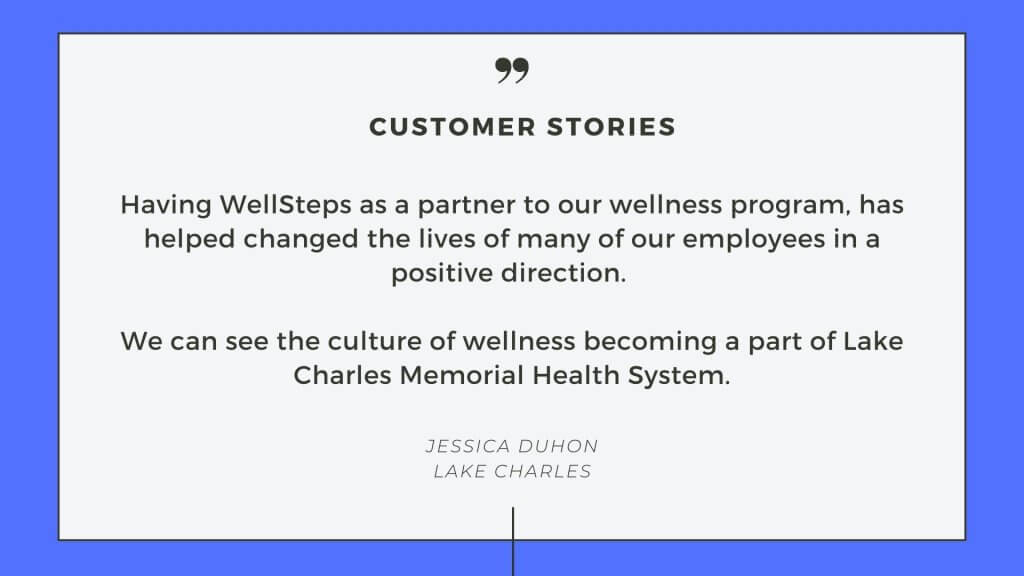You’ll come across plenty of discussions that focus on mental and physical health, but what about financial health? Here’s a comprehensive guide for financial wellness programs in the workplace.
A major part of the workforce is facing a financial crisis in light of the pandemic. The rising cost of living, exorbitant medical bills, uncertain job security, and mounting debts have amplified the financial distress of employees around the world.
In PwC’s 2022 employee financial wellness survey, as many as 34% of employees agreed that financial issues impacted their mental health. Additionally, only 42% of employees can comfortably make ends meet amid the rising cost of living.
Thus, more companies need to realize how health and wellness programs must factor in the financial challenges of a workforce.

By providing financial wellness programs in the workplace, organizations benefit greatly from higher employee retention rates, productivity, attendance, and engagement. Let’s deep dive into how these can be successfully implemented.
What Do Financial Wellness Programs In The Workplace Offer?
Financial wellness initiatives aim to help employees efficiently manage their finances with relevant, straightforward information. Many of these strategies also include one-on-one counseling with expert advisors to keep each worker motivated and empowered throughout their financial journey. Counselors are crucial in helping them understand the importance and benefits of managing their money wisely.
An ideal financial wellness program involves a robust mix of financial literacy and competency education, as explained below:
| Financial Literacy Understanding how money works is essential if an individual is going to learn how to spend and save wisely. To build financial literacy, employees must comprehend the basics of efficient budgeting, spending, and clearing debts. | Financial Competency How employees apply this newfound financial literacy is imperative for financial stability and growth. The improved saving, spending, and investing will determine their financial progress within a program. |

| Financial Management A financial wellness program preferably combines financial literacy and financial competency solutions. Employees can successfully work on their investments, savings, and retirement plans only after learning exactly what they’re doing and why. Good financial wellness programs are designed to help individuals build a healthy relationship with money and make life at work and home comfortable, stable, and fulfilling. |
Financial wellness programs in the workplace also cover the following parameters:
- Spending behavior and patterns
- Debt reduction and elimination
- Credit score building
- Budgeting personal and household expenses
- Student loan repayment plan
- Financial crisis and emergency management (taking into account unemployment, collections, and bankruptcy)
- Setting financial goals
- Long-term and short-term financing
Good financial wellness programs are designed to help individuals build a healthy relationship with money and make life at work and home comfortable, stable, and fulfilling.
RELATED: Employee Health Programs Worth Investing In
Why Do Financial Wellness Programs Matter In The Workplace?
According to TIAA’s 2022 survey, employees who participated in a wellness program were more likely to have a strong financial wellness rating than those who didn’t. And as mentioned earlier, this status directly correlates to the state of their mental and physical health.
Thus it’s clear that implementing financial wellness programs to reduce employee stress, anxiety, and feelings of uncertainty about the present and future is paramount.

Financial Literacy Increases Presentism In Office
In the above paragraph, we stated that educating employees on financial basics can help them efficiently manage their money. That’s because when you understand how budgeting, saving, and investing money works on a personal level, you also gain clarity on your next move. This instills confidence and eases worry about the future.
Employees are more likely to show up at work when they feel better about their financial status and security. Presentism, in turn, positively impacts employee retention, business objectives, employee well-being, and productivity levels.
RELATED: How Wellness Programs Improve Employee Retention
Engenders Happier And Healthier Employees
Without a doubt, a business’ success lies on the shoulders of its workforce. When employees are happy and healthy, they work better, smarter, and more efficiently. The result is a satisfied employer. It’s a win-win situation for both parties.
Emotional and mental turmoil are challenges that could inadvertently affect health and well-being, which may be prevented by improving one’s finances. Employees who feel assured about their financial standing are less likely to experience them.
Prevents Productivity Loss
Productive employees complete tasks faster and churn more output, allowing a business to invest less in manpower, resources, and operational costs. But this can be possible only when they are happy. Thus, investing in your employees’ happiness can greatly improve profit margins and growth opportunities through employee productivity.
Companies with financial wellness programs in the workplace are more likely to experience lower productivity losses by addressing not just their employees’ wellness and health needs but their financial concerns, too.
RELATED: Why are Happy Employees More Productive in the Workplace?

How To Promote Financial Wellness At The Workplace
A discreet financial wellness program can make your employees feel comfortable about discussing their finances. Hence, it’s wise to hire a dedicated team of external professionals whose only job is to create, monitor, and improve a program that benefits your staff.
The role of management is to actively monitor the health of the proposed financial wellness program. This can be done by tracking outcomes and conducting employee surveys. It’s also recommended to keep abreast of new and failproof financial program initiatives that work on a national and global scale.
To increase employee engagement and participation in your financial wellness program, it’s important to promote it in the right way. Read on to find out how to do this.
RELATED: How to Get Maximum Wellness Program Engagement: The Complete Guide 2022
Know Your Employees’ Needs And Proceed Accordingly
If it’s going to cost you a pretty penny to provide your personnel a financial wellness program, then you should put in a little effort to get it right on the first go.
You must first understand the kind of financial assistance your employees need before hiring an independent finance wellness team. Consider creating an anonymous survey or arranging for face-to-face conversations with a confidential financial advisor.
Once you get a sense of your employees’ desired help, choosing a financial wellness program that clearly and unbiasedly addresses those matters is the next step.
Here are the top questions to ask employees in an anonymous financial assessment survey:
- Explain your top financial concerns in detail. Do any of them cause stress, anxiety, or fear?
- How confident are you with managing and spending your money on a scale of 1 to 10? (10 being the highest)
- Do you have adequate funds to comfortably retire?
- Is your current financial status affecting your personal, social, or work life?
- Would things improve at work and home if we offered daycare services on location? (This question is for companies that don’t have on-site daycare.)
- Are there any company benefits you would like to see in place to make life at work better?
- Name a thing or more of what needs to change to make the office a better place to work in.
- Do you feel financially stable and fulfilled on the job? If your answer is no, what do you wish would change?
- What kind of benefits are you expecting from a financial wellness program?
Financially Educate Your Employees
Enlightening employees on the importance of financial management will give them a valuable perspective.
Some individuals may feel like things are fine as they are, and therefore, might not see the relevance of a program. For this group, you can focus on how unpredictable events such as the pandemic can cause panic and instability when one is caught unprepared. Emphasize as well that it’s smarter to have your finances in order.

To get your employees’ participation and engagement in discussions related to financing, have a professional come in to elaborate on the ins and outs of the subject. A round of Q&A can follow and anonymous feedback forms can be collected to help the management assess the outcomes of similar initiatives.
Before introducing a financial wellness program to your workforce, they need to be confident in the information they acquire about financing and how it works. Invest in the time it takes to get them up to speed so that everyone equally benefits.
Before introducing a financial wellness program to your workforce, they need to be confident in the information they acquire about financing and how it works.
Generate Awareness Of Company Benefits
It’s good to maintain a transparent, honest relationship with employees and potential candidates to gain their trust and loyalty. Companies that offer financial wellness assistance among other benefits in an employee’s package can expect to see a spike in interested applicants.
For individuals to take a financial wellness program seriously, it’s important to spread awareness of financial planning, management, and security through active promotional initiatives. For example, sending out engaging emailers, formulating strong marketing campaigns that focus on wellness as a whole, and hosting webinars or meetings.
A financial wellness program must similarly be aligned with a company’s values to benefit employees in the best possible way.
Offer Educational Benefits
Helping out with student loans and acquiring funds for an upskilling certification are perks your employees will appreciate. Another one worth touting is assisting them to efficiently accumulate and access school and college funds for their kids.
With the cost of education and childcare going up, it’s only natural for couples to put off their baby-making plans or worry about their children’s futures. Education financing and planning in the workplace can help employees overcome their financial uncertainties and insecurities, and lessen the burden of starting or supporting a family.

Provide Insurance Benefits
An alarming number of people around the world don’t have health insurance. This basic human necessity should be accessible through a financial wellness program. It puts employees in a better position to handle exorbitant medical emergencies and hospital fees.
Health insurance encompasses critical aspects of the healthcare spectrum such as:
- maternity needs
- hospitalization after surgery
- post-surgery care
- medication
- rehabilitative services
- mental health programs
- laboratory services for tests
Companies should incorporate a holistic wellness approach with a financial program to help employees feel empowered about their health, wellness, and financial choices. Such a program can grant employees access to a solid healthcare plan.
Without wellness initiatives and a health insurance plan in place, employees will feel a lack of assistance. This could greatly diminish, and even defeat, the purpose of a financial wellness program.
RELATED: 4 Ways Insurance Brokers Offer Wellness Programs to Employers in 2022
Extend Financial Assistance Through Reimbursements
Reimbursements for medical and wellness expenses empower employees to confidently spend their allowances on pressing health needs. Known as health and wellness stipends, these costs allow employees to claim eligible expenses by submitting a reimbursement request through an honor system.
A health stipend permits employees to get their own health insurance, sign up to the company’s group health insurance plan, or simply use the amount for out-of-pocket medical expenses. Similarly, a wellness stipend reimburses employees for wellness expenses as part of a healthy-living activity or program.
Medical and wellness stipends provide employees with financial flexibility by letting them decide how they want to use the benefits of a financial wellness program or company reimbursement scheme. Ultimately, offering health and wellness stipends put employees in a better position to focus on achieving their financial goals.
Medical stipends can be offered as reimbursement for the following:
- Prescribed medication
- Vision insurance premiums
- Hospital visits
- Dental insurance premiums
- Healthcare co-payments
- Health insurance premiums
- Chiropractic sessions
- Expenses as per the IRS Publication 502
On the other hand, wellness stipends can be offered as reimbursement for:
- Home exercise equipment and accessories
- Fees incurred on fitness or meditation apps or programs
- Wearable fitness trackers
- Health or fitness sessions
- Gym or fitness studio memberships

Conclusion on Financial Wellness Programs in the Workplace
Implementing financial wellness programs in the workplace can encourage employees to take charge of their expenses and savings. By giving them the opportunity to work on their finances, you’re helping them succeed not just professionally but also personally.
By giving them the opportunity to work on their finances, you’re helping them succeed not just professionally but also personally.
The key to a successful financial wellness campaign is a program customized to the needs of your workforce. Thus, you should hire a financial wellness company with a strong presence in the market and a proven track record of helping employees in the long haul.
Interested in formulating a financial wellness program for your employees? Sign up for our free demo and get the help you need to start!
Our panel of expert consultants is highly skilled in wellness initiatives and solutions, aimed at improving life in and out of the office. With our expertise, you’ll be better prepared to create and support a culture of wellness in all its spheres and offer a financial wellness program that works for everyone.
Get in touch and we’ll lead the way.
